The First World War, as seen through the unique Country Life Picture Archive
Country Life looks back at the First World War through the lens of the Country Life Archive. View images, read a selection of wartime articles, and also download war artist Muirhead Bone’s first catalogue of drawings, originally published in 1917.
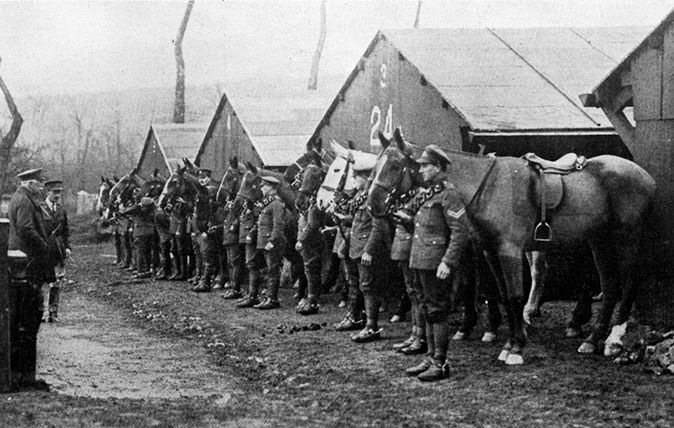

Back in 2014, Country Life began a 10-part series looking at the history of the First World War as revealed by our outstanding archive. Published weekly since 1897, the magazine was still young when Britain declared war on August 4, 1914. It had largely ignored the Boer War, but the scale of the looming conflict made the subject impossible to escape.
Although Country Life never attempted to compete with the daily reportage of newspapers, its own character as a highly produced weekly magazine of catholic tastes made it ideal for providing context for the news and illustrating what papers could only describe. Professional photographs of topical places were regularly published in articles ostensibly concerned with history or culture.
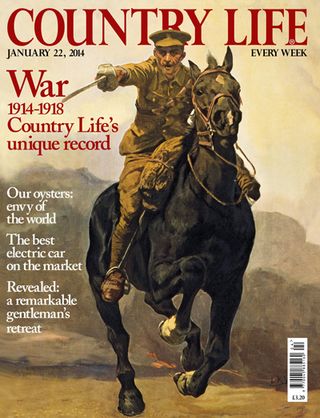
Country Life doesn't offer a rounded account of the First World War, but each issue is a complete authentic product of its time. As such, a unique authoritative history of the First World War — fascinating, curious, poignant and delightful by turns — may be discovered within its pages. A selection of these images and articles is available online via the links below.
Sign up for the Country Life Newsletter
Exquisite houses, the beauty of Nature, and how to get the most from your life, straight to your inbox.
PART V: THE WAR IN THE TRENCHES
PART VI: ADVERTISING & THE WAR
PART IX: THE WOUNDED & PRISONERS
OFFICIAL WAR ARTIST: SIR MUIRHEAD BONE
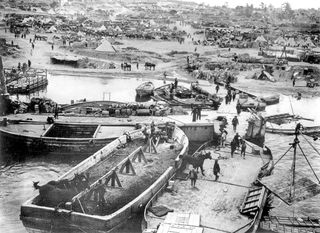
Landing supplies at Helles Beach, Gallipoli, 1915. The Gallipoli Campaign — also known as the Dardanelles Campaign or the Battle of Gallipoli or the Battle of Canakkale — took place on the Gallipoli peninsula in the Ottoman Empire (now Gelibolu in modern day Turkey) between 25 April 1915 and 9 January 1916, during the First World War. A joint British and French operation was mounted to capture the Ottoman capital of Constantinople (Istanbul) and secure a sea route to Russia. The attempt failed, with heavy casualties on both sides.
The tragic story of George Moor, the 18-year-old who won a Victoria Cross at Gallipoli and survived the Somme, only to die days before the end of the First World War
Second Lieutenant George Moor was a teenager who signed up for service at the outbreak of the First World War
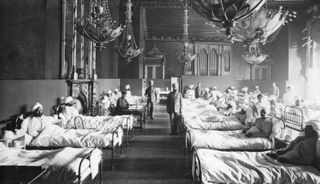
Injured Indian soldiers of the British Army at the Brighton Pavilion, converted into a military hospital in 1915.
Ten stately homes which became hospitals during the First World War
To mark 100 years since the end of the First World War, The Royal British Legion draws our attention back
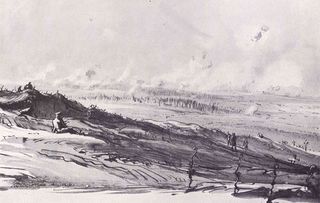
The unique and extraordinary images of the First World War created by Britain's first-ever official war artist
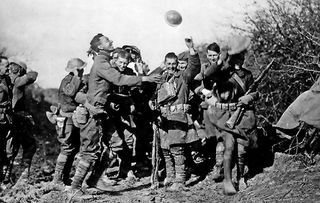
KJTK60 FIRST WORLD WAR ARMISTICE November 1918. British soldiers in France celebrate the signing of the Armistice
'There are some things that never will be reproduced if the world lives a million years': What it was like to be alive at the end of the First World War
They cheered, they cried, they laughed, they danced in the streets. Almost 100 years to the day since it was
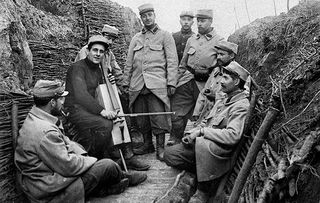
A soldier with a trench cello of the type used by by Harold Triggs, pictured in a French trench in 1914. (Photo by Neurdein/Roger Viollet/Getty Images)
In Focus: The trench cello which brought the joy of music to the First World War
The men who spent years in the trenches of France and Belgium found all manner of ways to bring a
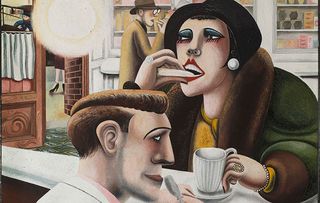
In Focus: The evocative, sensual masterpiece created in the wake of the First World War
Edward Burra was too young to have fought in the First World War, but his powerful oil painting The Snack
Agnes has worked for Country Life in various guises — across print, digital and specialist editorial projects — before finally finding her spiritual home on the Features Desk. A graduate of Central St. Martins College of Art & Design she has worked on luxury titles including GQ and Wallpaper* and has written for Condé Nast Contract Publishing, Horse & Hound, Esquire and The Independent on Sunday. She is currently writing a book about dogs, due to be published by Rizzoli New York in 2026.
-
 A tub carved from a single block of San Marino marble — and nine more beautiful things for the ultimate bathroom
A tub carved from a single block of San Marino marble — and nine more beautiful things for the ultimate bathroomThere's a bathroom out there for everyone — whatever your preferred style.
By Amelia Thorpe Published
-
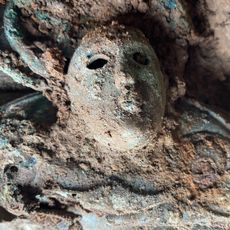 Archaeologists in North Yorkshire discover ‘the biggest and most important Iron Age hoard ever found in Britain’
Archaeologists in North Yorkshire discover ‘the biggest and most important Iron Age hoard ever found in Britain’The 800 objects — including chariots and iron tyres — were likely buried in the 1st century AD around the time of the Roman Conquest of southern Britain.
By Jack Watkins Published
-
 Country Life says: Save our Sealyhams
Country Life says: Save our SealyhamsThe delightful Sealyham terrier is on the verge of extinction. We must reverse the fortunes of this doughty little dog.
By Country Life Published
-
 Meet Rabbit, Britain’s naughtiest dog
Meet Rabbit, Britain’s naughtiest dogLovable, scruffy and nearly always in trouble, this Heinz 57 terrier has won Country Life's quest to find the UK's most disobedient dog.
By Katy Birchall Published
-
 Top 15 naughtiest dogs in Britain
Top 15 naughtiest dogs in BritainWe reveal the winner and runners up of our competition: Britain’s Naughtiest Dog in association with Lily’s Kitchen.
By Katy Birchall Published
-
 8 famous Jack Russell terriers (and their owners)
8 famous Jack Russell terriers (and their owners)Top terriers.
By Kate Green Published
-
 Silver sea trout fishing in North Uist
Silver sea trout fishing in North UistCountry Life's Editor Mark Hedges goes fishing for silver sea trout with David Profumo.
By Country Life Published
-
 Land of Hope and Glory: British Country Life Episode 2
Land of Hope and Glory: British Country Life Episode 2Learn more about episode 2 of Land of Hope and Glory: British Country Life
By Country Life Published
-
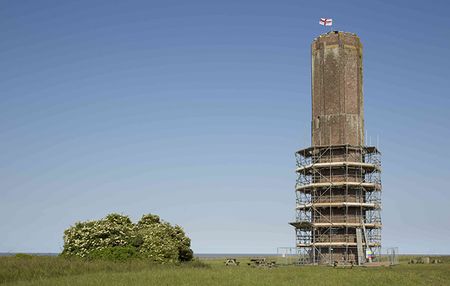 7 heritage sites in need of rescue
7 heritage sites in need of rescueHistoric England publishes an annual Register of Heritage at Risk. Here are seven sites added to the list this year.
By Agnes Stamp Published
-
 Hunting Act: 11 years on
Hunting Act: 11 years onHunting is alive and well.
By Country Life Published
